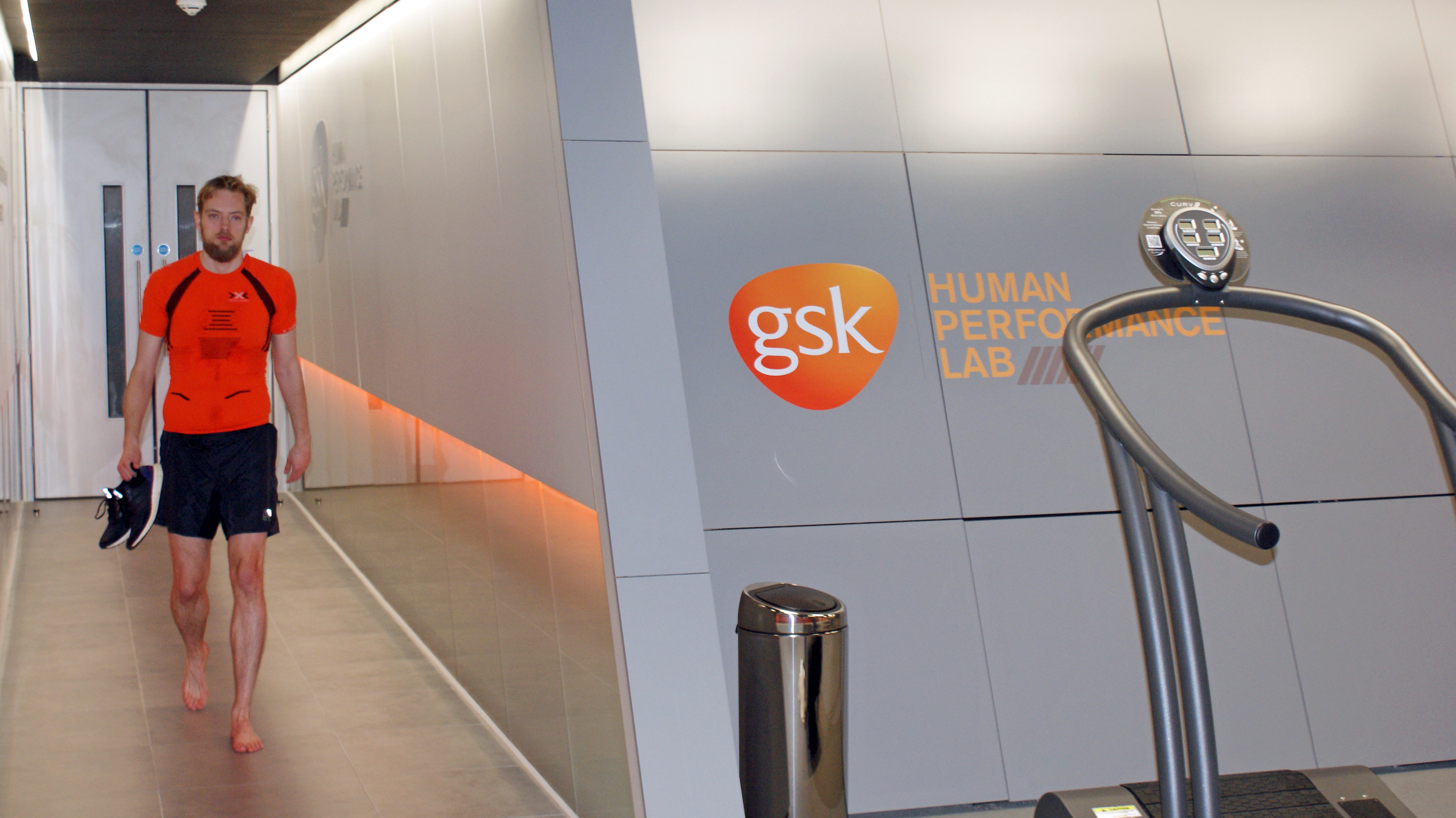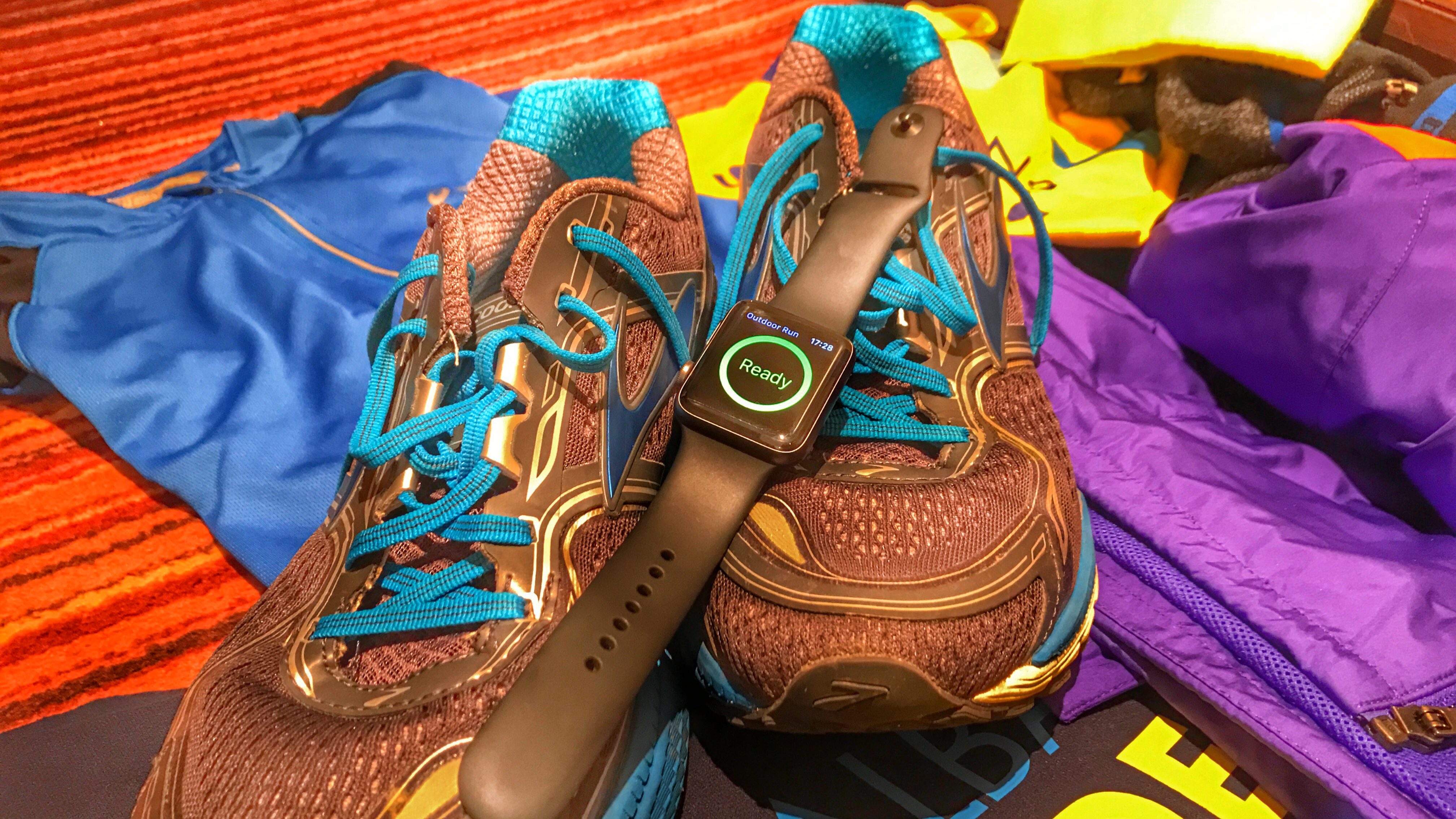In search of the impossible: the perfect training plan for the London Marathon
Day 3: How our Running Man of Tech was thwarted by tech itself

I’ve just completed my final long run before the big day (a brilliant steady-speed run in the sunshine with the rest of the Runsketeer crew), and as I was looking through all my stats on Strava I nosed through my training log for the first time.
Looking at the weekly mileage, I was pleased to see the familiar curve in front of my eyes: weekly mileage ramping up to a peak of around 55 miles per week then coming back down again as the taper to the race begins.

I felt a pang of disappointment that I hadn’t crossed 60 miles though - I’m part of a marathon group on Facebook for runners looking to go below three hours for the race (I’m like a guy outside the party with his nose pressed against the window, wishing he was part of the crowd…) and all of them are extolling the virtues of doing at least 60-odd miles if you want a strong marathon time.
I struggled a lot with my training plan this year though - and it started out with me following technology down a path I didn’t really like.
- Want to watch the race? See our London Marathon live stream guide
Riding the (Omega)wave
I’d been messing around with the Omegawave system since August last year, prior to taking on the Pike’s Peak Ascent mountain race. This is a system for consumers that’s designed from ‘proper’ sports science.
In short, you basically wire up electrodes to your head and hands, strap on a heart rate monitor and lie still each morning until the iOS app has registered your real fatigue levels.
It does this by checking your heart’s rhythm, where the ‘shape’ of your pulse holds the truth about how tired you are.
Sign up for breaking news, reviews, opinion, top tech deals, and more.
The electrodes are just there for my own pleasu… nah, not really. They check out your central nervous system to work out how adaptable your system is and ready to accept new training.
Omegawave takes that data and uses it to adapt a training plan for you each day: I was using the sub-three hour marathon plan (man’s gotta dream…) and if I was too tired for a speed session, the app would reduce the effort accordingly. There’s no point in pushing on a fatigued system.

This was perfect, an amazing blend of tech and training. Imagine me, the Running Man of Tech, beating my friends for I have harnessed the power of gadgetry while they scratch away with flint and slate!
(OK, they’re not that bad. I just wanted to provide some context).
A few weeks in, and I was struggling. The sessions weren’t that hard (a lot of slow running and minimal speedwork) and I didn’t like running with a phone strapped to my arm.
The app worked using heart rate zones it established each morning, so when the monitor I was wearing lost my rhythm it could mess up whole sessions.
If I didn’t want to use the phone it meant spending hours coding in the runs manually into my Garmin - and that was too much like hard work when I had tough times ahead of me on the track.
However, I wasn’t going to criticise a plan developed by an Olympic coach - it was my fault if I wasn’t enjoying it, and I was sure the speed sessions would come later.
But there was a bigger problem: every morning the app was telling me that I was in brilliant shape, telling me I was rested really well and good to go again.
This happened whether I’d slept badly or trained hard - so I chained together six hard sessions in a row to see if I could force the app to admit I was destroyed.
Nope.
In desperation I spoke to Omegawave directly, and they kindly spent an hour with me over Facetime running through my data. It showed that the harder sessions were having an effect, but a negligible one.
In short, they couldn’t find any other reason than I was recovering exceptionally well. I’ve always had a good resting heart rate, but this didn’t sit right with me - either I wasn’t pushing hard enough or there was something missing.
That’s where I had to admit something terrible: I was too reliant on data. There’s no doubt that Omegawave’s info was accurate, given it comes from the professional world of sports science, but it wasn’t painting my whole picture.
So I decided to switch back onto my old plan from 2016, which was much more traditional (although I'm still going to work with the Omegawave training plan - I still want to figure out why it didn't work for me.

My old plan consisted of long runs on Sunday, recovery runs Monday and Wednesday, speed and tempo sessions for Tuesday and Thursday and a Parkrun on the Saturday.
I instantly felt sharper, felt like I could tailor my sessions to how I felt and trusted in the upcoming sessions and paces I was being asked to do.
I’m a big fan of heart rate training - it makes a lot of sense. Training at effort rather than speed means you don’t need to worry about hills or fatigue levels or terrain - if today is a tempo session, get into a higher heart rate and stay there. It doesn’t matter if you’re doing six or 12 minute miles as long as you’re pushing at the right intensity.
But for some reason, it doesn’t suit me. For some reason, it doesn’t train my head to run faster at the right times - instead, it just forces me to react to a number on my wrist rather than feeling the full cacophony of senses rolling through my body on any run, letting the adrenaline spike through, feeling how hard my legs are working.
It doesn’t take into account whether my entire body is aching and making me feel wretched, or like I’m suddenly flying and feel like I’ve got total control of every muscle and fibre.
So I train at the pace the plan tells me to train at - and it seems to work. It does leave me to wonder whether I’m leaving any pace or effort on the table though… I just wish I felt confident enough to work out my own training plan.
So now I’m approaching race day, and I’m still unsure of my target. I had the same thing last year - I’d trained at sub-three level with my pals who were aiming for that time, and I’d matched them, so I thought I’d run the marathon with them and see what happened.
The thing is, I knew that it was ambitious, and that ambition saw me to blow up in the race - even though I was running to heart rate.
So now I’m in the dreaded situation of looking at my training and wondering what it translates to in terms of a possible marathon time.

I could look at the VO2 Max level that my Garmin watch spits at me (a measure of the blood oxygen levels when exercising, indicating how fit you are) but I’ve got a feeling that the 2:36 marathon time it predicts I can manage might be a little optimistic.
So I’m going to aim for 3:05 and hope that’s not too optimistic. It will get me ‘good for age’ status so I can avoid the ballot next year, but I’m wondering if I can hit seven minute miles for the whole race.
Some days I think I can, others I think it’s insane. I just don’t want to get to 20 miles and start to watch my marathon fall away - I want to run ahead of a time, not chase it.
Ah well - there’s nothing I can do about it now, I guess. But I’m already thinking about my next training plan, righting the wrongs of this one (‘I’ll do three practice marathons!’ Yeah, great idea…) so it shows I don’t have the confidence I need.
But don’t let my story put you off in any way - most runners this close to a race are starting to become certain that they’ve screwed something up, simply because there’s nothing that can be done now.
I’ll spend some time tomorrow talking about how you can use tech to find the perfect plan for you - there are so many great devices out there to get you race fit in no time (including the one that got me started).
I’m off to gorge on more pasta and sweet potato and avoid any Easter chocolate… this has been a tough week.
If you've got any tech questions ahead of the big day - or just about running in general - feel free to get in touch using the links below, or the email address in my author bio! It'd be great to answer some direct questions from runners over the next few days.
- Gareth Beavis is TechRadar's Running Man of Tech, bringing you a daily diary as he counts down to the big race at the London Marathon.
- Day 1: The reasons behind the run
- Day 2: The tech I'll use to take the start line
- - If you want to say hi, he's @superbeav on Twitter
- You can see his stumblings on Strava
- And for more data, follow him on Smashrun
- And if you want to get the full lowdown on the latest and greatest running tech, read the rest of the Running Man of Tech story here

Gareth has been part of the consumer technology world in a career spanning three decades. He started life as a staff writer on the fledgling TechRadar, and has grew with the site (primarily as phones, tablets and wearables editor) until becoming Global Editor in Chief in 2018. Gareth has written over 4,000 articles for TechRadar, has contributed expert insight to a number of other publications, chaired panels on zeitgeist technologies, presented at the Gadget Show Live as well as representing the brand on TV and radio for multiple channels including Sky, BBC, ITV and Al-Jazeera. Passionate about fitness, he can bore anyone rigid about stress management, sleep tracking, heart rate variance as well as bemoaning something about the latest iPhone, Galaxy or OLED TV.